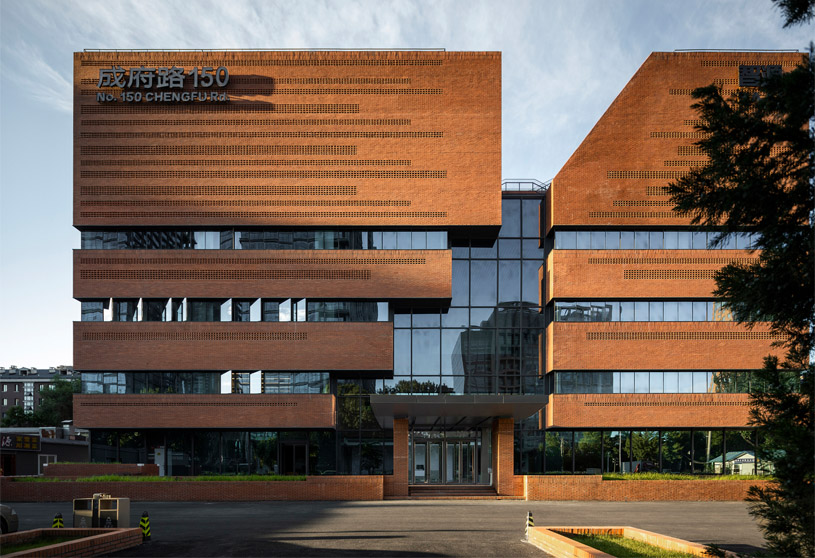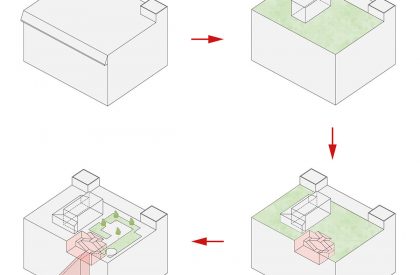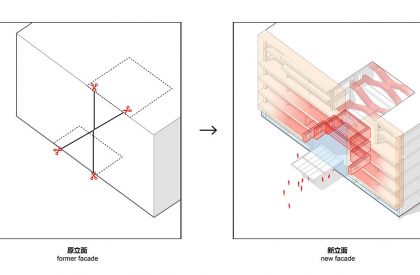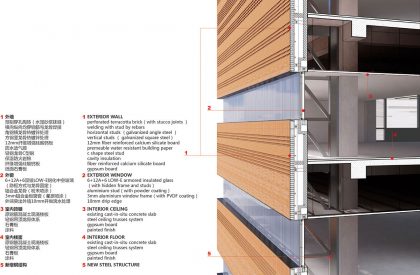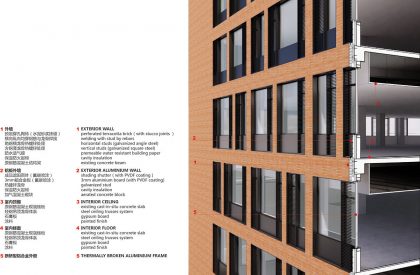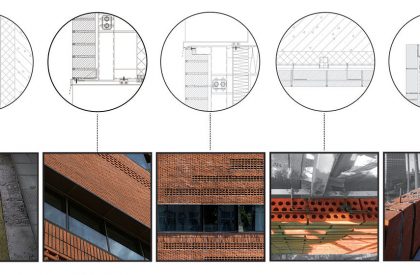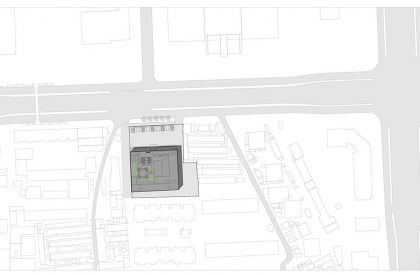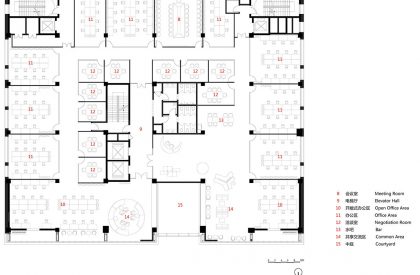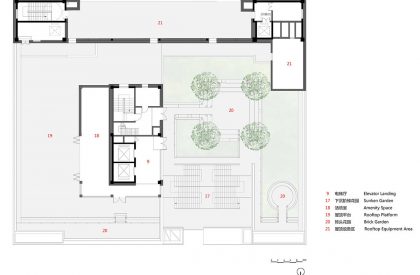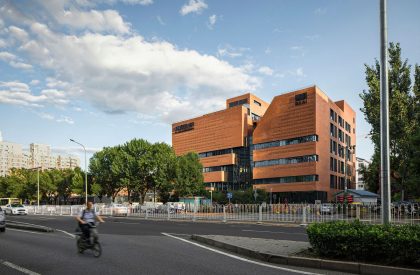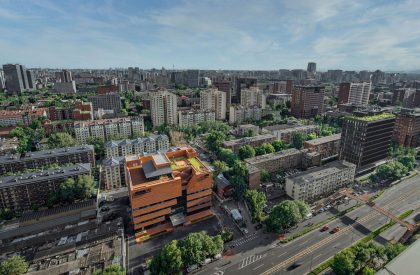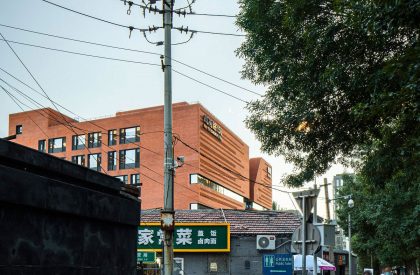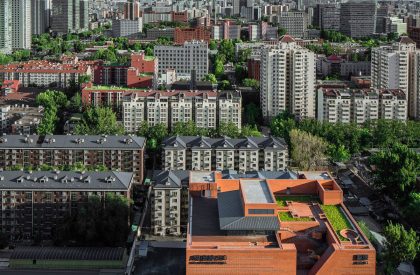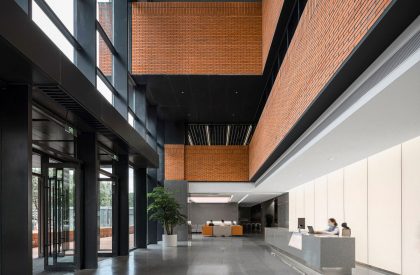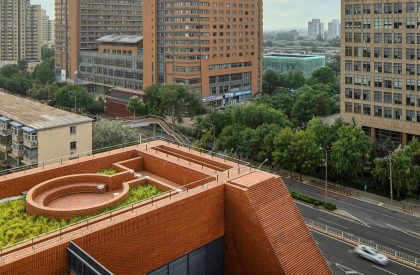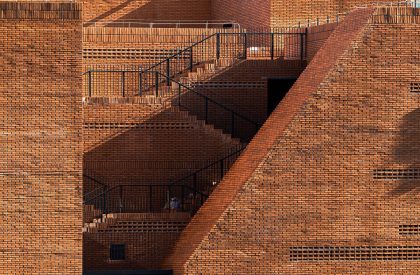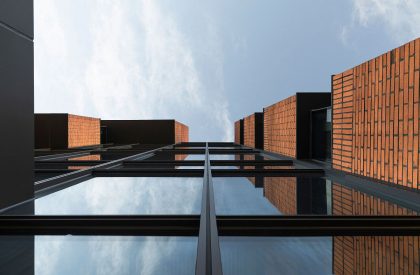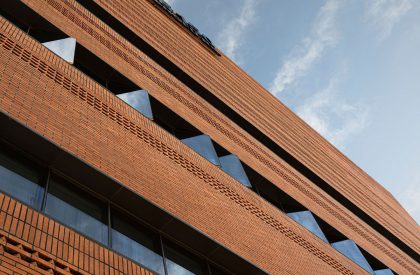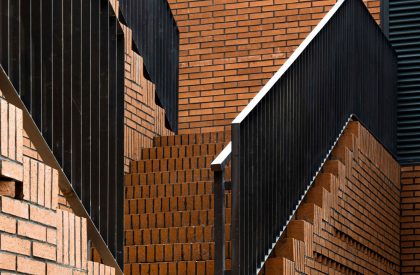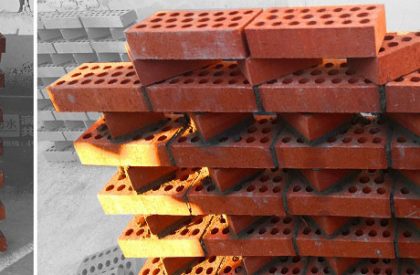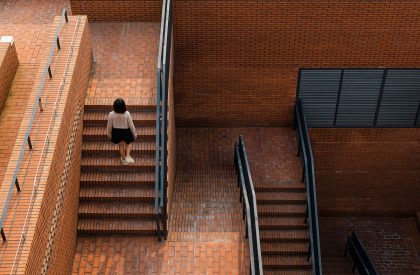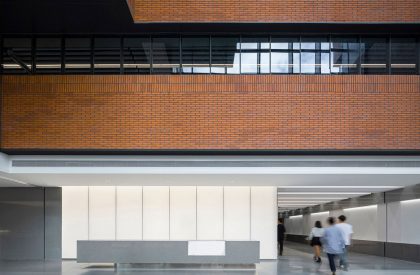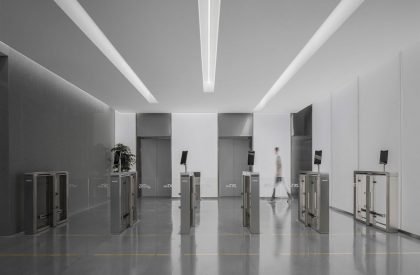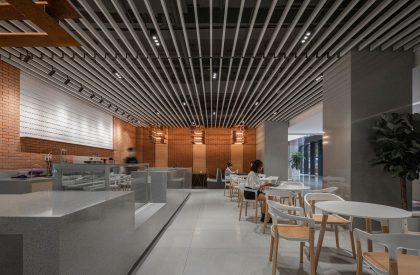Excerpt: No.150 Chengfu Road is an office building restored by the architectural firm URBANUS. The final solution is a holistic response to all the thinking: the red brick curtain wall system is to respond to the Tsinghua building material. The facade expresses the 3D public space after renovation. The four-level height lobby space is stepping up the atrium to connect to the stepping-down roof terrace. All the design efforts make this building a productive space for young professionals. As a healing space, the roof garden is all rendered with bricks in line with the facade.
Project Description
[Text as submitted by Architect] Chengfu Road, in front of the South Gate of Tsinghua University, is a 4km long avenue that connects Peking University and the University of Science and Technology Beijing. The name “Chengfu” comes from the former residence of a Qing Dynasty Prince.
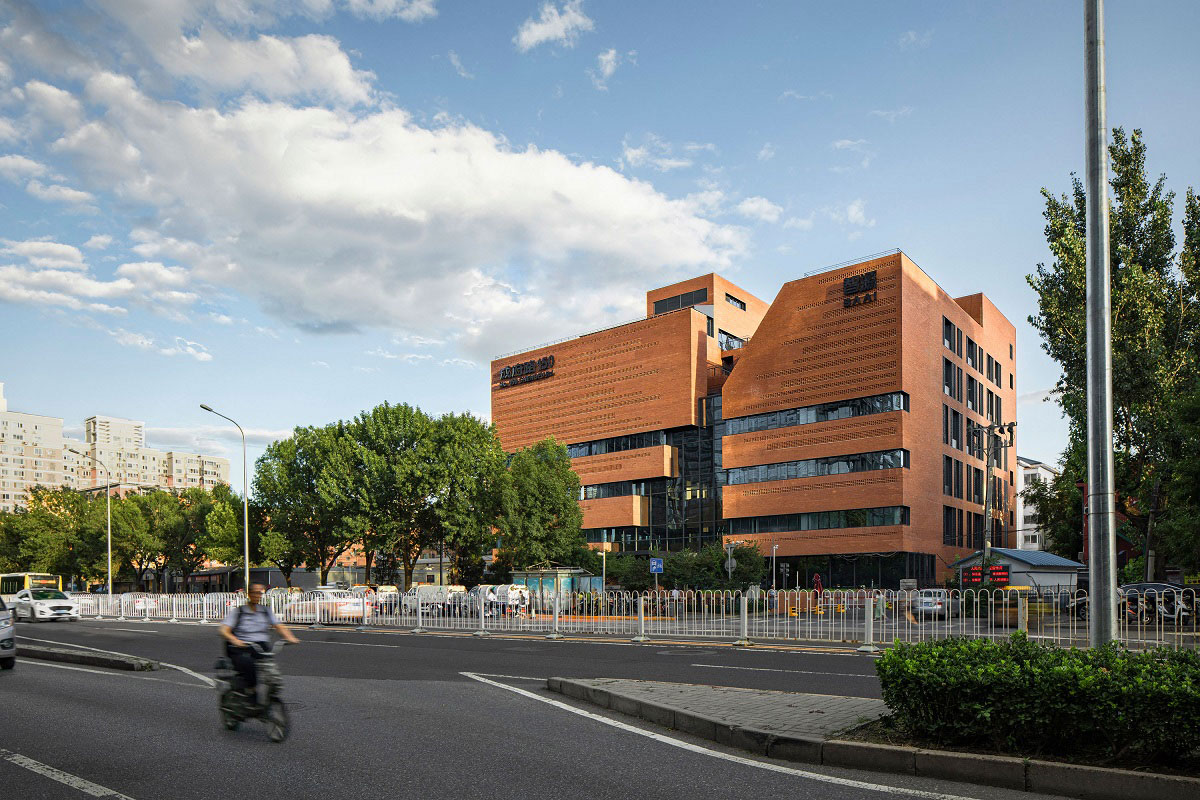
The Lanrun Building on Chengfu Road faces the south entrance of Tsinghua University. Originally planned as a shopping mall with 75m by 90m dimensions in a plan, this building was indeed used by mixed business patterns. The “Chaoshifa” supermarket at the ground level is a daily visit spot to the community. The upper levels were occupied by some educational institutions. Besides, a youth hostel also took up the floor of this building. Under the current Beijing urban planning, Chengfu Road will be upgraded into a high-tech Silicon Valley. As a state-owned business with an excellent location, the Lanrun Building is planned to become a platform hosting internationally competitive high-tech companies.
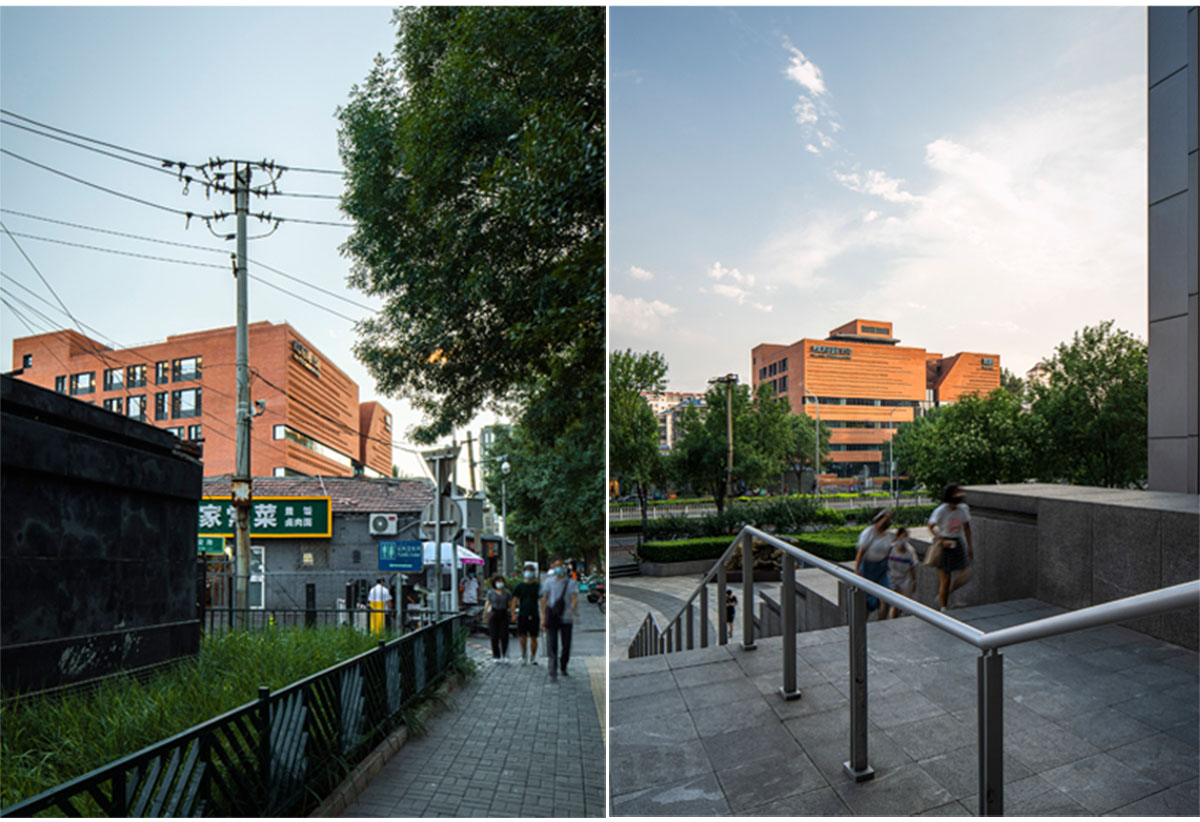
As a critical urban renewal project in Beijing, the government of the Haidian District was very serious about the building renovation. This could be read by changing this project name from “Lanrun Building” to “No.150 Chengfu Road”, which means highlighting the importance of Chengfu Road.
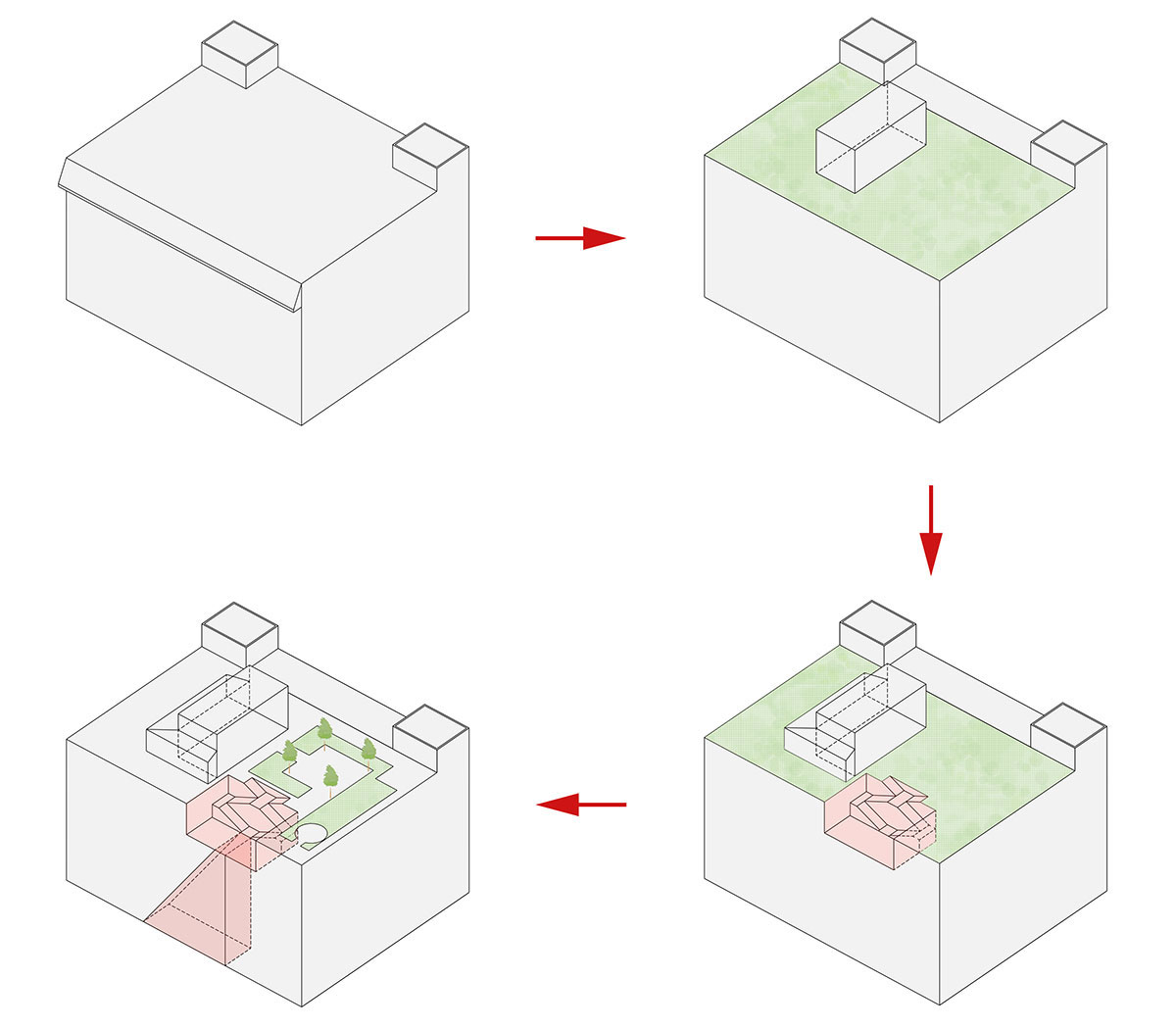

Before URBANUS was invited to this project, more than 10 previous versions by other design firms had failed. The reason was that those schemes only focused on the facade renovation but did not have any input to upgrade the building system. Our approach is to find solutions by precisely identifying problems. The core problem here is how to make this building attract the high-tech company’s young workers. This couldn’t be solved by a simple facade renovation.

Lacking underground parking, the courtyard will be fully occupied by vehicles. In addition, there are no nearby public amenities, and thus the building is very isolated from its context. Our solution is to make the rooftop terrace a gathering area for young people. Based on this idea, the facade design strategy is to show an intent to connect the ground floor lobby to the rooftop garden.
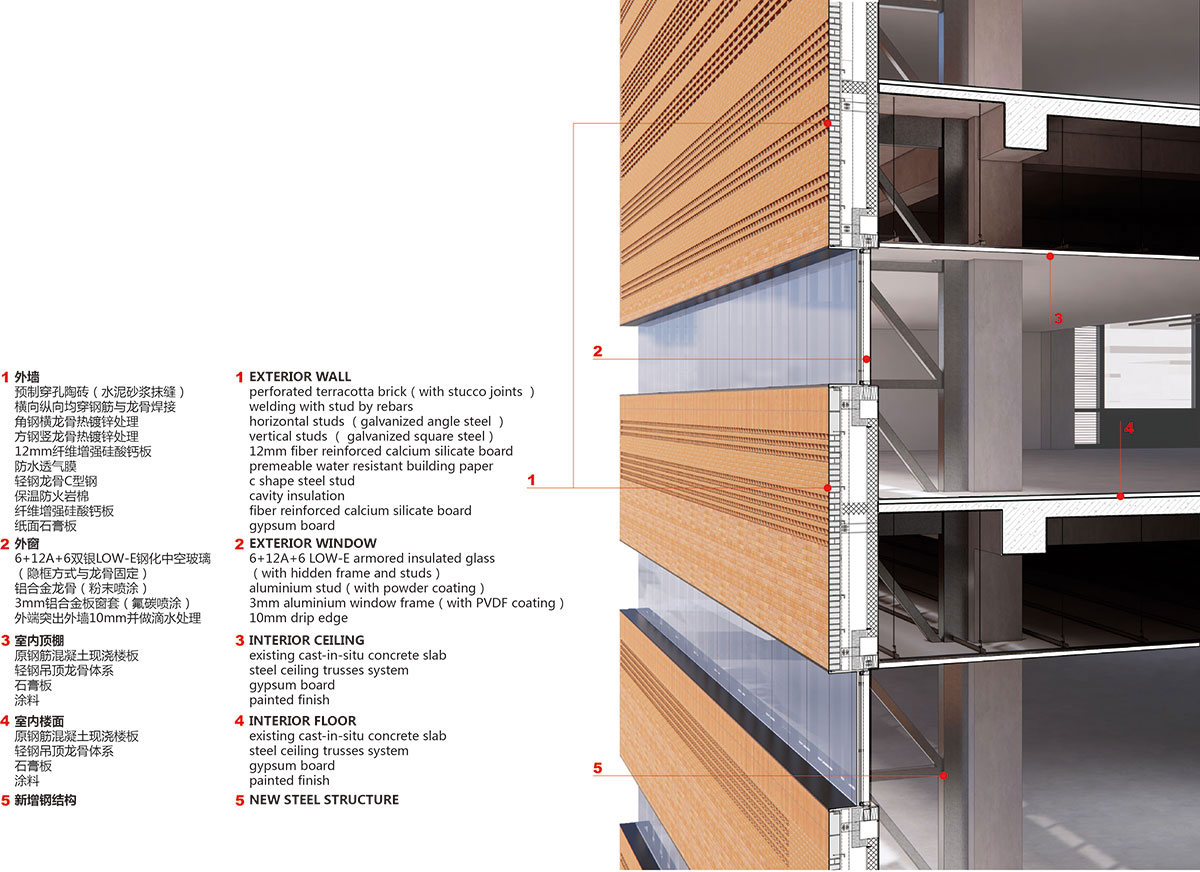
The final solution is a holistic response to all the thinking: the red brick curtain wall system is to respond to the Tsinghua building material. The facade expresses the 3D public space after renovation. The four-level height lobby space is stepping up the atrium to connect to the stepping-down roof terrace.
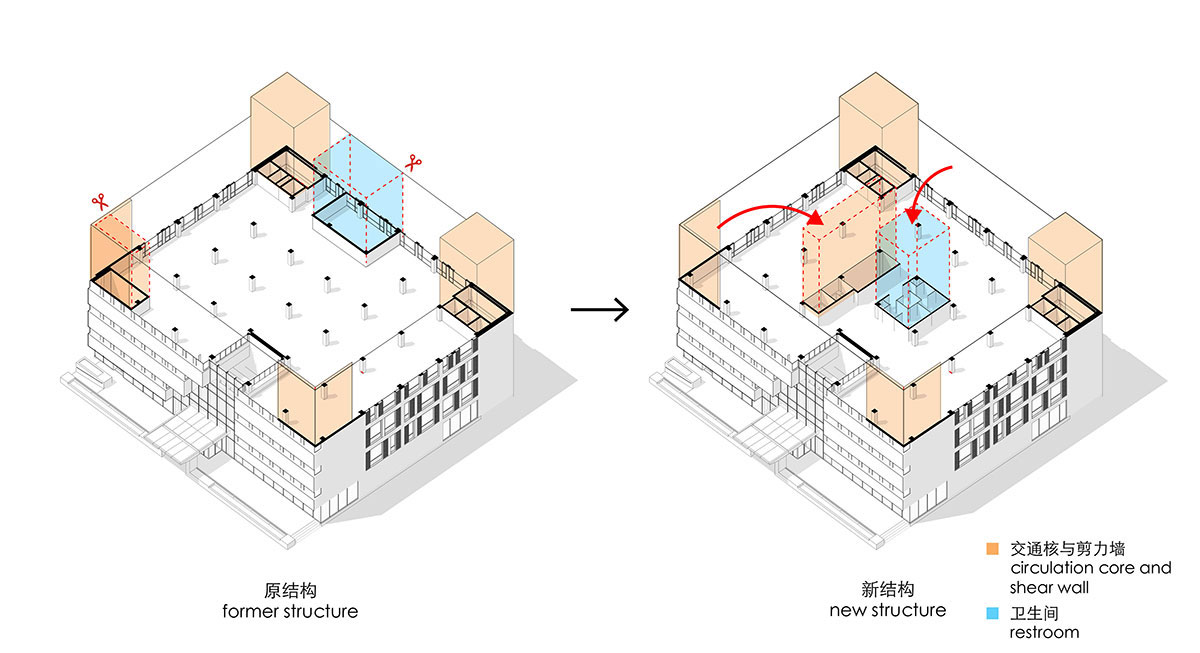
After figuring out all of the space diagrams, a more significant structural problem appears. Due to the change of the floor slab, the whole structure needs to be recalculated. Furthermore, with the new codes, the system needs a lot of reinforcement work. Moreover, the client asks for a huge conference hall on the first floor, and it is inevitable to remove a column to create a double-height space. To achieve this, first, we add a crossing beam to strengthen the point of the missing column. Though only the second-floor slab needs to be changed during the construction, the third-floor slab is to be removed first to reinforce the column down below. Had we known the complexity of this result, we would not have had to do such a structural change.
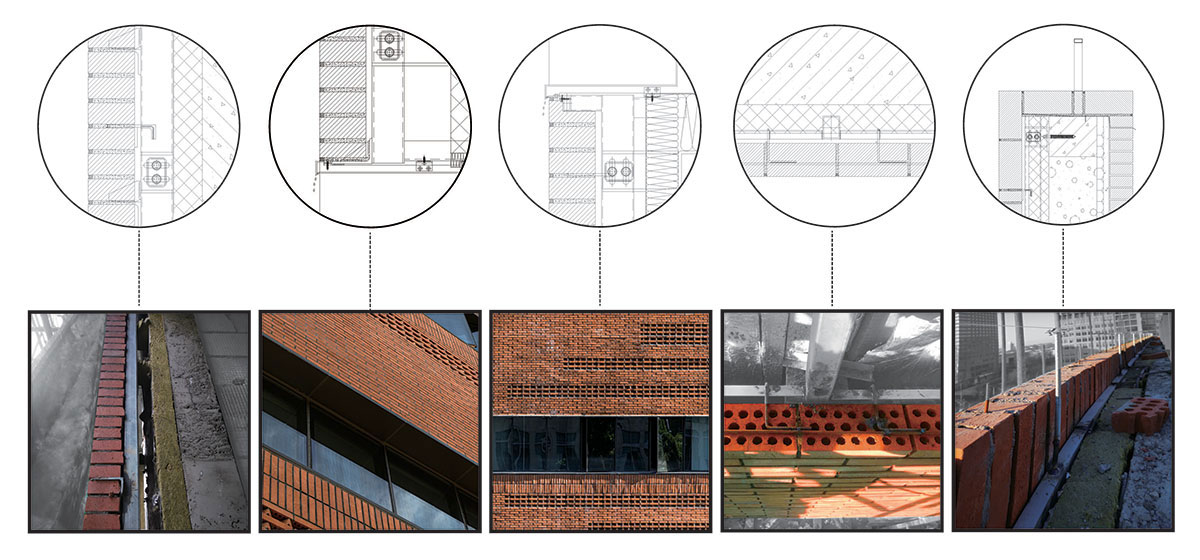
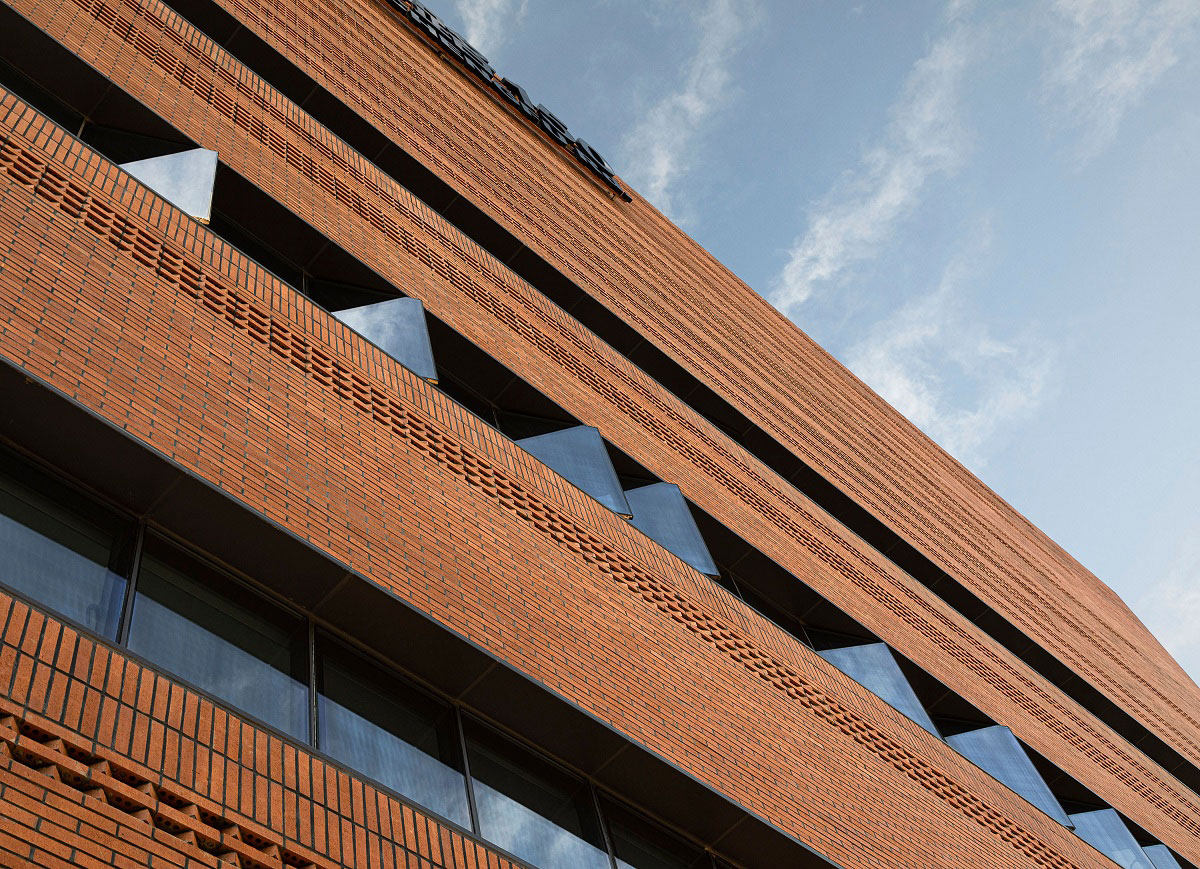
Besides, some other problems are also unimaginable. For instance, a new road planned on the west side of the building a dozen years ago may not be executed in the future. However, the building still asks for the setback from this scheduled road. The outline of the original structure is barely sitting on the setback line. Therefore, putting another layer of brick on the face of the existing facade will be challenging. Another example is to reinforce the underground structure by the code requirement. Due to the overlapping piping system with the neighborhood, the contractor has to figure out an intelligent digging strategy to solve this issue.

These challenges help to bring countless achievements in design and construction. To form an inverted cone shape atrium, we removed a column on the north side and removed partial floor slabs from the second to fourth floors. A suspension column is added from the upper floor to hold the load from the big overhang slab of the third floor. In addition, several studies introduced a steel truss system to reinforce the rigidity of two big brick walls in the sunken garden and prevent its structural deformation.
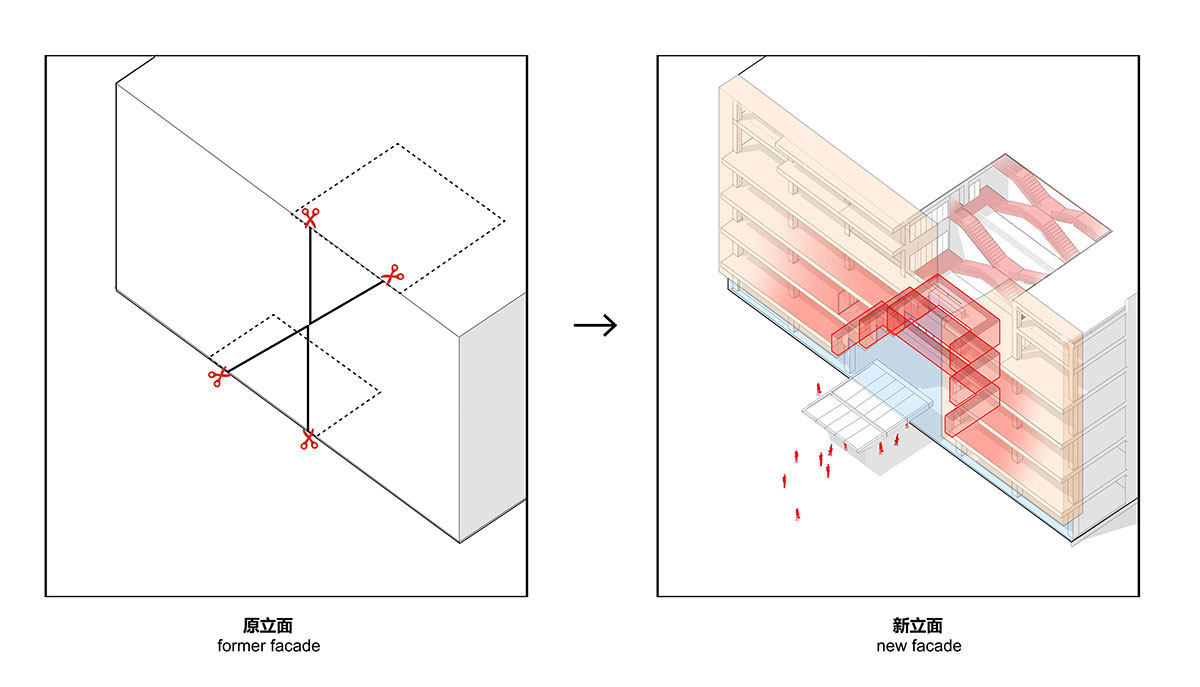

The most dramatic moment happened with the brick wall system. Our brick supplier closed after the quarantine period, which meant the whole technical inspection procedure had to be restarted. Because the typical brick system never reaches this height, the construction method needs to be certified by a laboratory. Fortunately, the client found a more suitable supplier in Yixing with better product quality. Besides, the complicated brick pattern requires a full-size mock-up to study during the construction, and the hollowed bricks cause waterproofing issues on site.

All the design efforts make this building a productive space for young professionals. As a healing space, the roof garden is all rendered with bricks in line with the facade. Taking an overview of the surrounding buildings in this high-tech area at the roof garden, one will get a completely different feeling from the view of the chaotic ground. Today, faced with fierce international competition, Chinese workers deserve to have a better workplace. The time has changed. Now the Lanrun building is renamed No.150 Chengfu Road.
